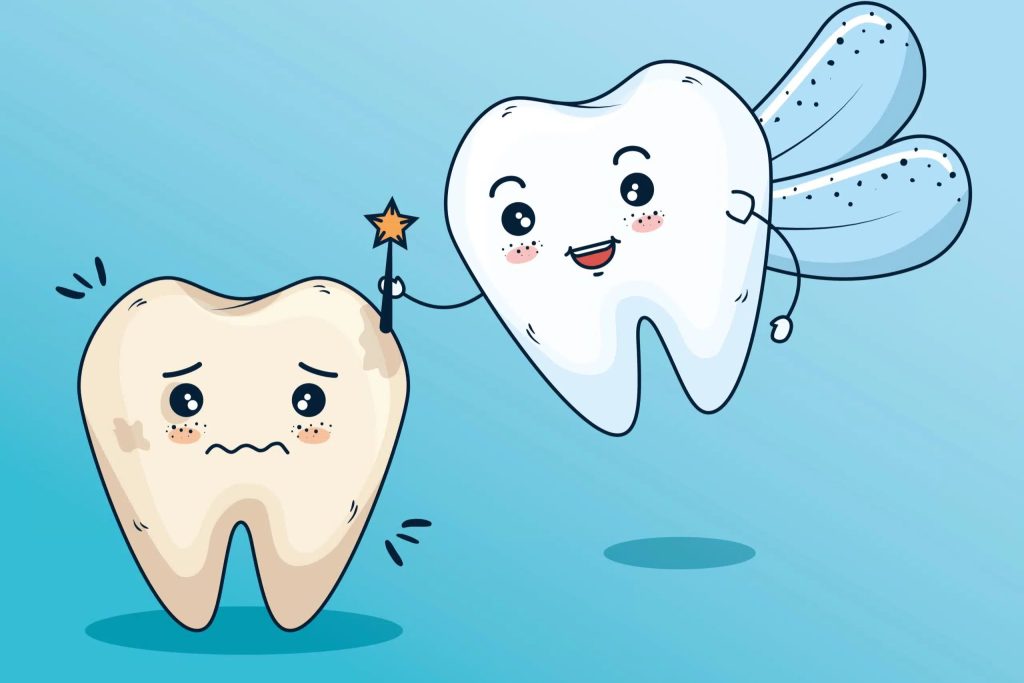In the tapestry of American folklore, few characters capture the imagination quite like the Tooth Fairy. This enchanting figure, who stealthily exchanges children’s lost baby teeth for money or small gifts, has nestled itself firmly in the hearts of families across the nation. But where did this whimsical tradition originate? While the origins of the Tooth Fairy are shrouded in mystery, with theories pointing towards European folklore and early 20th-century children’s magazines, it’s the joy and wonder she brings that truly cements her place in cultural history. Celebrated on February 28, National Tooth Fairy Day is not just a nod to this mythical figure but a celebration of childhood milestones and the imaginative stories that make them memorable. As children tuck their lost teeth under their pillows, they participate in a rite of passage shared by generations, eagerly awaiting the magic that nightfall brings.
Key Takeaway
Timeline
Day Activities
-
Crafting Tooth Fairy Letters: Kids get their creative juices flowing by writing heartfelt notes to the Tooth Fairy, detailing their tooth-losing adventures. This activity not only sparks their imagination but also practices their writing skills. They can decorate these letters with glitter, stickers, or drawings, making each message as unique as a snowflake.
-
Tooth Fairy Treasure Hunt: Transform your home into a magical realm where children embark on a thrilling treasure hunt, guided by clues left by the Tooth Fairy herself. Each clue leads them closer to a hidden stash of goodies or coins, adding an element of excitement and mystery to the day’s festivities.
-
DIY Tooth Containers: Encourage kids to craft their own personalized tooth containers. Using old film canisters, small boxes, or even egg cartons, they can decorate these holders with paint, markers, and sequins, creating a special bed for their lost teeth. This hands-on activity not only fosters creativity but also gives their precious teeth a cozy place to rest until the Tooth Fairy arrives.
Why We Love This Day
-
Sparks imagination and magic
Who doesn’t love a bit of mystery and magic? National Tooth Fairy Day ignites children’s imaginations, making them wonder about the enchanting world where the Tooth Fairy lives. Kids dream up all sorts of stories about how their teeth are collected and what the Tooth Fairy does with them. This day is a fantastic way for youngsters to dive headfirst into a world of fantasy, right from the comfort of their own bedrooms. -
Promotes good dental hygiene
Let’s face it, getting kids to brush their teeth can sometimes feel like pulling teeth. But, with the excitement of a visit from the Tooth Fairy, children are more inclined to brush and floss without a fuss. National Tooth Fairy Day serves as a fun reminder that taking care of their pearly whites has its rewards. Not only do they get a visit from a magical being, but they also get a little something under their pillow for their efforts. -
Strengthens family bonds
This whimsical holiday isn’t just for the kiddos; it’s a chance for the whole family to get in on the fun. Parents and siblings can share their own Tooth Fairy stories, creating a lovely tradition that brings everyone closer. Whether it’s crafting a tiny note to leave under the pillow or finding creative ways to swap out the tooth for a coin or small gift, these moments create lasting memories. National Tooth Fairy Day is a heartwarming opportunity for families to connect and share in the joy of childhood wonder.
Past & Future Dates
| Month | Day | Year |
|---|---|---|
| FEBRUARY | 28 | 2022 |
| FEBRUARY | 28 | 2023 |
| FEBRUARY | 28 | 2024 |
| FEBRUARY | 28 | 2025 |
| FEBRUARY | 28 | 2026 |
| FEBRUARY | 28 | 2027 |
| FEBRUARY | 28 | 2028 |
FAQ
Why are there two national Tooth Fairy Days?
Tooth Fairy FAQ Q. Why are there two National Tooth Fairy Days? A. The National Day Calendar team has not discovered the origins of either of the holidays, but it is interesting to note the American Dental Association’s recommendation to have cleanings twice annually.
Is there a national Tooth Fairy day?
Indeed, there is. National Tooth Fairy Day falls on February 28th, marking a whimsical occasion dedicated to the charming tradition of the Tooth Fairy visiting children.
What national day is 28th February?
Besides being National Tooth Fairy Day, February 28th also celebrates National Public Sleeping Day. A day when grabbing a quick snooze in public places isn’t just acceptable, but encouraged.
How to celebrate Tooth Fairy day?
Celebrating Tooth Fairy Day can be fun and educational. Try encouraging good dental hygiene by gifting toothbrushes or toothpaste, reading stories about the Tooth Fairy, or even crafting a small pillow or box for the kids to place their lost teeth in. It’s all about sparking joy and imagination while promoting healthy habits.
